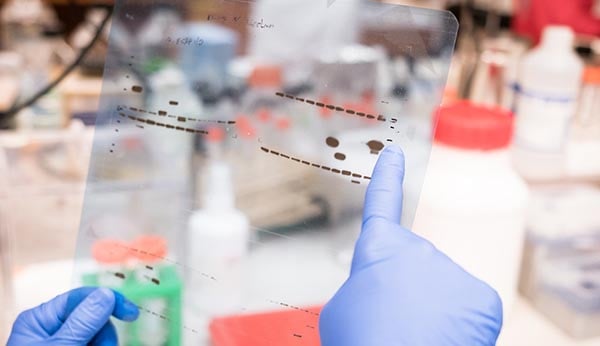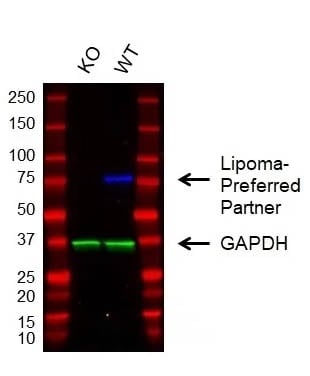
Popular topics

Taking Control of Your Western Blotting Troubles

This is a scenario that most scientists performing western blot experiments will be all too familiar with, but it could have been prevented in the first place by including the appropriate controls. Knowing what controls to include in your western blot experiment can save you days, weeks, or even months of troubleshooting. Importantly, even if you do generate a blot with a nice clean band at the correct molecular weight, to get your results published, you need to include the right controls to demonstrate confidence in your interpretation of the results.
Different types of western blot experiments require different controls. Therefore it is important to consider the type of western blot you are performing and the result you are trying to show when deciding which controls your particular experiment requires. This blog discusses the three basic types of controls that should be included in a western blot experiment and provides a good starting point for troubleshooting any western blotting woes that you may encounter.
1. Secondary Antibody Only Controls
It is essential in a western blot experiment to include sections of membrane that are probed only with the secondary antibodies. This should be an area which has had proteins from all of the different lysates in the experiment transferred onto it. This is an important control as it enables you to determine if any bands you observe in lanes probed with both your primary and secondary antibodies are the result of nonspecific binding of your secondary antibody to proteins in your lysates. It also helps confirm that your band of interest is really your target protein. If this band is present as a result of your primary antibody binding to your protein of interest, it will only be observed in lanes probed with both your primary and secondary antibodies, and not in lanes probed with only your secondary antibody.
 2. Loading Controls
2. Loading Controls
Loading controls are essential in any western blot experiment. They demonstrate that differences observed in the expression levels of your protein of interest, between samples, are genuine and not the result of unequal loading of samples onto your gel. Usually, this is achieved by including an antibody to a housekeeping protein such as β-Actin. This is known as a single protein loading control. Housekeeping proteins are thought to be ubiquitously expressed in most cell types. However, it is possible for the expression of housekeeping proteins to change under various experimental conditions like hypoxia.
Since housekeeping genes are highly expressed, it can also be hard to detect lower expressing proteins on the same blot. In such cases you may want to consider a different method to show consistent protein loading. Another way of showing that samples on your gel were equally loaded is to use a total protein stain. Total protein stains are reagents which reversibly stain the proteins on your membrane and one of the most common examples is Ponceau S. It is preferable to use total protein stains rather than a single protein loading control as you are not simply relying on the expression levels of one protein but all the proteins in your samples. By confirming the presence of proteins on your membrane, a total protein stain also confirms that these proteins have transferred efficiently onto the membrane. It is however important that your total protein stain is added to the membrane prior to the addition of any blocking reagent, which will inhibit binding of the total protein stain to the proteins on your membrane. Additionally, as most blocking reagents contain proteins the total protein stain would bind to the proteins in the blocking reagent on your membrane.
Another quick and convenient way to show total protein levels is to use stain free imaging technology like Bio-Rad’s Stain free Western Blot Workflow. Stain free technology enables the visualization of proteins in SDS-PAGE gels without the need for staining, or destaining, of gels.
3. Positive and Negative Control Lysates
It is important to include lysate from cells known to express your target protein as a positive control. This may be a cell line in which your target protein is endogenously expressed, or lysate from cells which have undergone treatment in order to induce expression of your target. This usually requires searching publications about your protein of interest. However, websites like Human Protein Atlas can help to determine whether a protein is expressed in a cell line or tissue. If there is a band at the correct molecular weight for your protein of interest, in lanes loaded with your positive control lysate but not in other lysates included in your experiment, this helps to confirm that your primary antibody is detecting your protein of interest and that your western blot conditions are optimal for detection of that target. It is therefore likely that your target is simply not present in the other samples. However, to have confidence in this result and rule out loading errors, ensure you include a loading control.
If you do include lysate from cells that have undergone a particular treatment as part of your experiment, it is also important to include a negative control. Select an untreated lysate from the same cells to show that the treatment is responsible for the observed effect. For example, if you are interested in a specific phosphorylation event, as well as inducing phosphorylation by treating your cells, you should also run lysate from the same untreated cells.
The final, but perhaps one of the most important things to remember, is that controls should be used in combination with each other. By including these three basic controls, you can be confident in the results you obtain from your western blot experiments, and successfully troubleshoot most unexpected results.
New to Western Blotting?
Check out our "Introduction to Western Blotting Guide" for details about the technique and help troubleshooting common issues
You may also be interested in...

View more Applications or Western Blotting blogs















